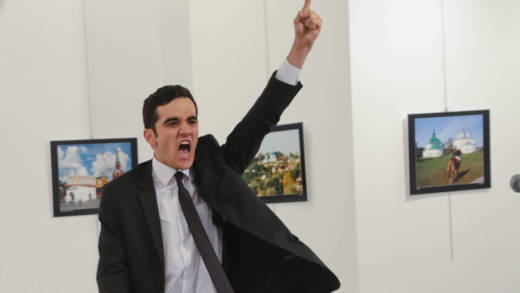The winning image of the 2017 World Press Photo of the Year award was described by one jury member as the “face of hatred.”
It shows a shouting, suit-clad gunman standing in an art gallery in Turkey’s capital, one hand holding a weapon, the other pointing to the sky. On the ground next to him is the crumpled body of his victim, Russian Ambassador Andrei Karlov.
Associated Press photographer Burhan Ozbilici, who happened to stop in at the gallery in Ankara on his way home from work on Dec. 19, 2016, was just a few feet away from the shooting and documented the harrowing event.
“I remember thinking: ‘I might be killed or injured, but the Russian ambassador has been shot. This is very big news, so as a journalist it is my responsibility to stand and do my work,'” Ozbilici said in an interview with World Press Photo’s Witness magazine. “Even if I was killed, there would still be photos.”
Jury members made it clear there was a difficult debate over whether selecting the photo might send the wrong message.

9(MDAxOTAwOTE4MDEyMTkxMDAzNjczZDljZA004))

